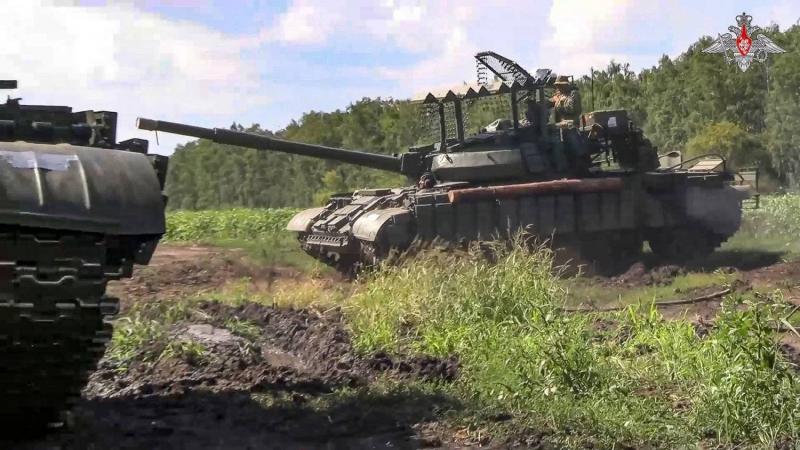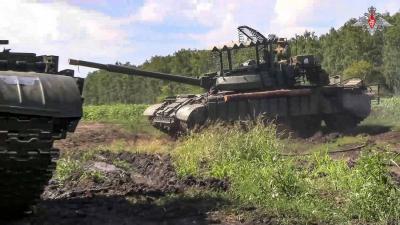There is no doubt that the sudden Ukrainian incursion into Russian territory in the border region of Kursk last week came as a shocking surprise to Moscow, which has been focused in recent months on showcasing its achievements on the ground and the slow but steady progress on several fronts. Kyiv has struggled for months to demonstrate its capability to endure against successful Russian attacks on the fronts in Kharkiv and Donetsk, and to send a message to the West that the support provided to Ukraine is effective and necessary, and that the notion of a "painful but inevitable Russian victory," which has begun to gain traction in the West, is not certain. Under these circumstances, the attack in Kursk has shifted the balance of power and placed Russian President Vladimir Putin in an unprecedented embarrassment since the outbreak of the war thirty months ago. Ukraine dealt a blow to the Kremlin by highlighting its failure to protect Russian territory and shattering President Vladimir Putin's narrative that Russia has largely remained unaffected by the war on distant fronts.
The Ukrainian incursion into Russia also sent a strong signal to Kyiv's allies that the Ukrainian army could seize the initiative and inflict at least a limited defeat on the Russian army. This is a particularly important message before the U.S. presidential elections and amid the increasing Western debates about the prospects of supporting Ukraine and the repercussions of the ongoing war on European countries.
**Zelensky's Adventure Concerns the West**
Western experts say that Ukrainian President Volodymyr Zelensky made a very bold decision by launching the operation, which is close to being a real gamble; during the days following the attack, Zelensky stated that Kyiv was "seeking to bring the war" into Russia, and that Ukraine was "proving it can exert the necessary pressure; pressure on the aggressor." When the incursion began on August 6, it initially seemed like "another display of military courage" by the "Russian Legion," one of the anti-Putin militia groups, but only two days later it became clear that Kyiv itself was trying to deliver a strategic counter-blow to Russia.
It is likely that the attack was based on a direct decision by Zelensky, who had reportedly pressured his military leaders for several months to launch a summer offensive. Given the issues related to manpower and resources in Ukraine, the leaders were hesitant, but Zelensky was keen to reverse the narrative that Ukraine was losing the war. He was indeed trying to find a way to stop losing more territory in eastern Ukraine and to disrupt or reverse that dynamic. This military strategic option is described by a military commentator as "largely bold and risky."
Western leaders are now increasingly worried, especially with the use of some ground equipment (armored combat vehicles, armored personnel carriers, rocket launchers, mortars, and ground-based air defense units) from NATO inside Russia, which presents a crossing of another threshold or "red line," even though Ukrainian leaders did not seek extensive coordination prior to the operation. This explains why Washington, in the following days, stated that it was waiting for additional information from Kyiv about the attack.
Nevertheless, Zelensky's gamble is fraught with risks; Moscow now has no options but to do whatever it takes to stop the incursion, and the Ukrainian counter-blow in Kursk can achieve only limited objectives. At most, Ukrainian forces around Kursk may hope to extend their reach beyond occupying the nuclear power station there, in exchange for Russia's occupation of the Ukrainian Zaporizhzhia station in 2022, but these goals will depend on how long the operation lasts and how the Ukrainians can hold their ground in Kursk. Reports indicate that the rapid advance of Ukrainian forces was made possible by electronic warfare equipment that cut Russian communications.
**What Comes Next in Kursk?**
Military analyst Franz-Stefan Gadi from Geneva states that the next phase of the Kursk operation depends on the reserves available to each side and how they will be utilized on the front. He continues, "Ukraine will need to move additional soldiers and military resources to the front to maintain the momentum of the attack, while Russia will aim to quickly repel the attack and use its firepower such as glide bombs." Gadi notes, as reported by the Wall Street Journal, that the main problem with the Kursk operation is that it does not change the situation on the eastern front, where Russian forces continue to advance, albeit at a slower pace. He adds, "The Kursk operation requires a significant amount of resources, especially infantry soldiers, whom Ukraine may need on another front." On the eastern front, Ukrainian officers are suffering from a shortage of soldiers and are questioning the logic of attacking Russian territory, even as they hope that this offensive operation in Kursk will relieve some pressure on their front.
Here, it is likely that the Ukrainian army would prefer to hold and fight in the pocket it has created, which may be reinforced, but the vast numbers of soldiers that Moscow is likely to send will ultimately determine the nature of the coming fight. The continued presence of this incursion into Russian territory will be unacceptable to President Putin.
**Three Options: Further Advance, Retreat, or Partial Withdrawal**
Retired Australian General Mick Ryan predicts three scenarios for the developments in the Kursk region. The first scenario, the most aggressive, involves trying to hold the territory that has been captured and possibly advance further to draw more Russian forces away from Ukraine, gaining leverage in future negotiations. However, this is a risky affair, according to the analyst, as it would be difficult for Ukrainian forces to provide cover for electronic warfare and air defense, even for well-coordinated forces in such a vast area.
The second scenario involves a retreat to save forces and equipment, which might be equipped with high morale, in an attempt to reclaim their territory next year. The third option consists of a partial withdrawal to safer positions closer to the Ukrainian border. This would require fewer troops while providing better artillery support and logistics, securing a base for further attacks in the future. A source for The Economist within the Ukrainian armed forces general staff indicates that this option is the most likely. Part of the logistical services—engineering forces, fuel, field hospitals, food, and repair bases—has already been moved several kilometers deeper into Russian territory.




